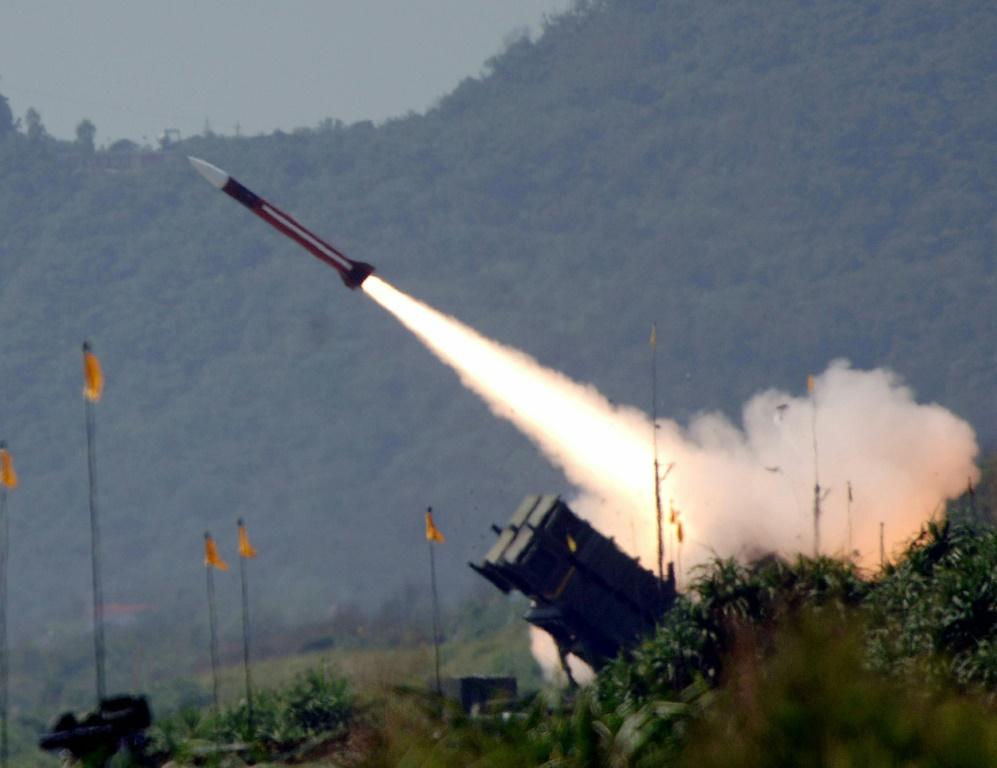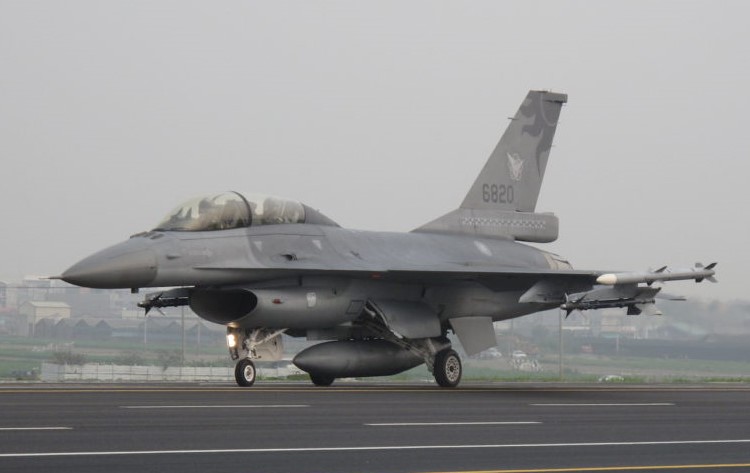Taiwan's Armed Forces
Since the Nationalist government took over Taiwan at the end of Japanese occupation, the armed forces of Taiwan has played an important role in the island’s life. In addition to serving as a deterrent for invasion from China, it has often played a role in maintaining domestic order.
It is a commonly held belief in the People’s Republic of China that Taiwan is a breakaway province, and that the Chinese mainland will have full “territorial integrity” only when Taiwan is returned to China. Many Chinese believe that all means, including war, are acceptable to bring about this goal.
At the present time, there are conflicting opinions about Taiwan’s military strength as well as China’s ability to invade the island, despite its status as a nuclear-armed superpower. Over the past decade, China has greatly expanded and modernized its armed forces. The PRC government spends more than $178 billion a year on the military, making it one of the world’s most militarily formidable countries. In addition to its vast firepower (more than 1000 Chinese ballistic missiles are believed to be aimed directly at Taiwan), a September 2021 report by Taiwan’s Defense Minister said that China's armed forces can "paralyze" Taiwan's defenses through soft and hard electronic attacks. China has also regularly sent military planes into Taiwan’s Air Defense Identity Zone (ADIZ). Over the weekend of October 1-2, 2021, China’s People’s Liberation Army (PLA) sent 77 warplanes into the skies around Taiwan, the most ever. And after the Russian invasion of Ukraine that began in February 2022 - with full diplomatic and economic support from the People's Republic of China - many political analysts predict that "Taiwan will be next." As a result of these threats, Taiwan is constantly reevaluating its military strategies and is upgrading its defense capabilities with military equipment manufactured domestically and purchased abroad, mostly from the United States.
While China outranks Taiwan in every military category (including 2,185,000 active duty military personnel compared to Taiwan’s 165,000), Taiwan’s military power is significant. According to the United States Department of Defense and the website Global Firepower, Taiwan’s armed forces includes 228 fighter aircraft (including American F-16s and French Mirage 2000-5s), 19 transports, 19 “special mission” aircraft and 91 attack helicopters; 1160 tanks, 8750 armored vehicles and 257 self-propelled artillery units. Jiashan airbase, which was built inside a mountain on Taiwan’s East coast, is said to have a 7500-foot long (2286 meter) taxiway and can accommodate 200 jet fighters.
Taiwan also possesses more than 120 naval ships, including destroyers, submarines, frigates and corvettes. In September 2021, Taiwan launched its first of six homemade “carrier killer” ships designed to have air defense capabilities and carry anti-ship missiles. As Taiwan continues to invest in its military, the figures above are expected to increase.
In addition, Taiwan possesses more than 6000 air-to-air missiles, over 1000 air-to-surface missiles, at least 100 glide and laser-guided bombs, more than 200 anti-ship missiles, 24 anti-aircraft artillery systems and over 500 surface-to-air (SAM) missiles. In the past, most Taiwanese missiles (many are designed and manufactured domestically) were deployed for defensive purposes, but in recent years Taiwan has developed missiles for attack. The Yun-Feng (Cloud Peak) for example, is a supersonic cruise missile that can travel up to 2000 miles and reach targets in and around Beijing, Shanghai and Tianjin. Taiwan is also developing advanced missile guidance systems targeted at the PRC in the event of an invasion. Taiwan is also working to provide additional layers of defense around military airfields against cruise missiles, anti-radiation missiles and drones, as well as potentially larger threats like helicopters and low-flying aircraft.

Taiwanese Yun-Feng Missile, said to be capable of reaching Beijing.
Source: AFP FILES / SAM YEH
The United States has no official diplomatic ties with Taiwan, but sells arms to it as part of its Taiwan Relations Act (1979). The Act states that “the United States shall provide Taiwan with arms of a defensive character and shall maintain the capacity of the United States to resist any resort to force or other forms of coercion that would jeopardize the security, or social or economic system, of the people of Taiwan.” It also declares that the President and Congress “shall determine the appropriate action” arising from any such threats to the Taiwanese people, a statement that many observers consider extremely vague.
Finally, the Taiwanese armed forces are not likely to “cut and run” under Chinese attack like the Afghan military did in August 2021 when confronted by the Taliban. Like the people of Ukraine, members of the Taiwanese military will defend their country and put up heroic resistance in the event of an armed attack from China.
Would all this be enough to protect Taiwan from Chinese invasion? Probably not. But some observers believe that attacking Taiwan would be like disturbing a hornet’s nest that could result in tremendous collateral damage to China.

R.O.C. Air Force F-16, 2013.
Photo Voice of America – Public Domain.
Even if only a few of the Taiwanese-based missiles reach China or if retaliatory attacks from several fighter jets bomb Chinese cities, the loss of life and property damage would be considerable, and could provoke political instability throughout the country. Political and possible military responses from the United States and other nations would be swift, and economic sanctions and boycotts from countries that enjoy unofficial diplomatic relations with Taiwan would produce both short and long-term problems for the Chinese economy. Finally, occupying a de facto country of over 70 years where the majority of its citizens have repeatedly expressed the desire to remain an independent democracy would be a major headache for Communist China, to say the least.
Media reports, especially those that seek to inflame political dialog or constantly predict “gloom and doom” should be viewed with suspicion. Plus, one needs to discern the truth when following social media regarding relations between Taiwan and China, along with and often conflicting opinions and analyses from professional pundits on the sidelines.
Both governments maintain sophisticated intelligence services that provide them with the latest information on which to base political and military strategies. Provided that these intelligence reports are accurate, they can help each government avoid potentially fatal errors in judgement. And despite highly publicized threats of impending attack, backchannel communications between the PRC and Taiwan have been carefully maintained for many years. These valuable contacts have been able to prevent misunderstandings and promote cross-strait dialog so that conflicts are minimized.
Both Chinese and Taiwanese are known for their creative intelligence and the ability to solve difficult and even insurmountable problems. A war between China and Taiwan would be disastrous for all concerned. It is hoped that a peaceful political solution can be worked out between the governments of China and Taiwan that would provide a workable and practical outcome.Notes
“2020 China Military Power Report,” https://media.defense.gov/2020/Sep/01/2002488689/-1/-1/1/2020-DOD-CHINA-MILITARY-POWER-REPORT-FINAL.PDF
“Taiwan says China can 'paralyse' its defences, threat worsening,” https://www.reuters.com/world/asia-pacific/taiwan-says-china-can-paralyse-its-defences-threat-worsening-2021-09-01/
“Comparison of Taiwan and China Military Strengths (2021),” (globalfirepower.com)
“Republic of China Air Force,” https://en.wikipedia.org/wiki/Republic_of_China_Air_Force
“Taiwan Deploys 42 Upgraded F-16s at Southwestern Airbase,”
https://www.thedefensepost.com/2021/05/20/taiwan-deploys-upgraded-f16s/
“China tests new missiles in simulated Taiwan strike,” https://www.washingtontimes.com/ news/2021/aug/31/ china-tests-new-missiles-simulated-taiwan-strike/
“Taiwan’s war games begin with response to simulated PLA biochemical attack,” South China Morning Post, September 15, 2021. www.scmp.com.
“China Sends 77 Warplanes into Taiwan’s defense Zone in Two Days, Taipei Says,” https://www.cnn.com/2021/10/02/asia/china-warplanes-taiwan-air-defense-intl-hnk/index.html
H.R.2479 – Taiwan Relations Act. https://www.congress.gov/bill/96th-congress/house-bill/2479
"'Think Twice:' Taiwanese Leader Warms China that Its 'Yun Feng' Missile can Reach Beijing," International Business Times, June 13, 2022. https://www.ibtimes.com/think-twice-taiwanese-leader-warns-china-its-yun-feng-missile-can-reach-beijing-3537106